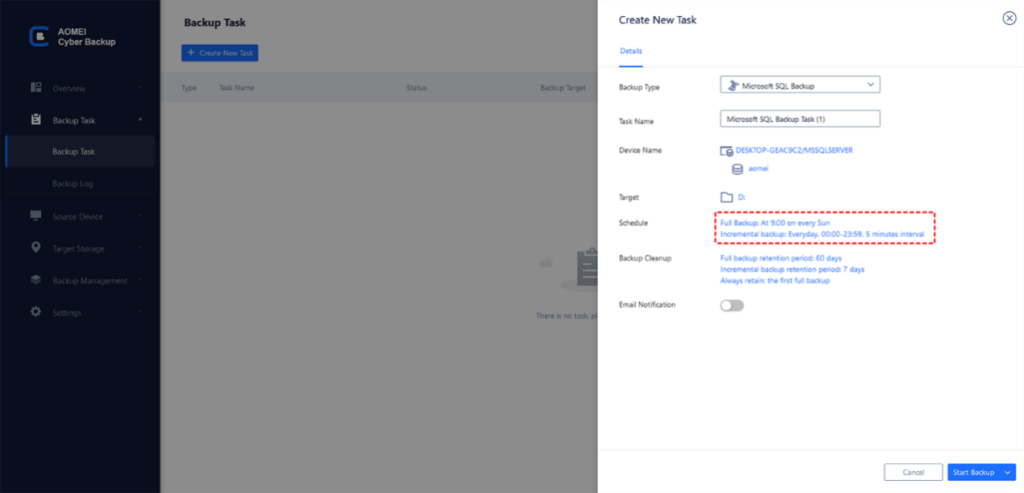Safeguard Your Data: A Comprehensive Guide to SQL Database Backup
Data is the lifeblood of any organization. Ensuring enterprise integrity and availability is crucial, especially when it comes to SQL databases. Data loss is a nightmare scenario for businesses, and without regular backups, the risks only escalate.
The Potential Risks of Not Having Proper Backups
- Data Loss: Hardware failures, human errors, or malicious attacks can lead to irretrievable data loss.
- Downtime and Revenue Loss: Data loss can cause significant downtime, leading to financial losses and reputational damage. Restoring data from backups can minimize downtime and get businesses up and running quickly.
What You Should Consider When Choosing SQL Backup Strategy
Selecting the right SQL database backup is essential for efficient data protection. Consider the following factors:
- Backup Frequency: Evaluate the rate at which data changes within your organization. Higher data change rates may necessitate more frequent backups to minimize data loss.
- Storage Options: Consider the pros and cons of local and cloud-based storage options. Local storage offers better control, while cloud-based solutions provide greater accessibility and redundancy.
- Scalability: Ensure your chosen backup strategy can scale to accommodate increasing data volumes. Consider future growth and select a solution that can adapt and expand with your organization.
- Testing and Verification: Regularly test and verify the integrity and usability of your backups. Perform restoration tests to ensure that your backups are reliable and complete.

Step-by-Step SQL Database Backup Using SQL Commands
Now let’s explore the step-by-step process of performing SQL database backups using relevant SQL commands:
Full Backup
Performing a full backup is a fundamental part of a robust backup strategy. Follow these steps:
- Connect to the SQL Server using a SQL client or SQL Server Management Studio (SSMS).
- Open a new query window and execute the following command:
BACKUP DATABASE [YourDatabaseName] TO DISK = ‘C:\Backup\YourDatabaseName.bak’
- Replace [YourDatabaseName] with the name of your database and specify the destination path for the backup file.
- Execute the command to initiate the full backup process.
Differential Backup
Differential backups capture the changes made since the last full backup, reducing backup time and storage requirements. Here’s how you can perform a differential backup:
- Connect to the SQL Server and open a new query window.
- Execute the following command:
‘C:\Backup\YourDatabaseNameDiff.bak’ WITH DIFFERENTIAL
- Replace [YourDatabaseName] with your database name and specify the destination path for the backup file.
- Execute the command to initiate the differential backup process.
Transaction Log Backup
Transaction log backups capture changes made to the database since the last backup, allowing for point-in-time recovery. Follow these steps:
- Connect to the SQL Server and open a new query window.
- Execute the following command:
BACKUP LOG [YourDatabaseName] TO DISK = ‘C:\Backup\YourDatabaseNameLog.trn’
- Replace [YourDatabaseName] with your database name and specify the destination path for the transaction log backup file.
- Execute the command to initiate the transaction log backup process.
SQL Database Backups Using AOMEI Cyber Backup
AOMEI Cyber Backup is a reliable solution for SQL database backups. It is a centralized backup and management solution for all SQL instances and virtual machines within LAN. It supports SQL 2005-2022 and enables you to back up selected databases to network locations without problems.
Here’s an overview of the SQL Server backup process:
☞ Install AOMEI Cyber Backup and its agent.
☞ Create a new backup job and select SQL Database as the backup source.
☞ Configure the backup destination path and schedule the backup job based on your preferred frequency.

☞ Save the backup job and execute it to initiate the SQL database backup process.
Conclusion
Proper SQL database backup is crucial for safeguarding your organization’s data. By understanding the potential risks, considering important factors, and following step-by-step instructions, you can implement an effective backup strategy. Additionally, utilizing reliable backup solutions like AOMEI Cyber Backup ensures enhanced data protection. Don’t leave your valuable data vulnerable; take action now to protect your SQL databases and ensure business continuity.

